












Bamboo & Organic Cotton
• Clothing Sizes NB-5Y
• Lou Lou and Co
• Mebie Baby
• Quincy Mae
Blankets & Footies
• Kyte Baby
• Copper Pearl
• Angel Dear
• Saranoni
Car Seats & Strollers
• Nuna
• Uppababy
• Doona
“



- Kayla S..










Investors should consider the investment objectives, risks, and charges and expenses of the CollegeAccess 529 plan before investing. This and other important information is in the Plan Disclosure Statement, available at www.CollegeAccess529.com. Read the Plan Disclosure Statement carefully before investing.
Before investing, you should consider whether your state of residency, or your intended beneficiary’s state of residency, offers a state tax deduction or any other state benefits such as financial aid, scholarship funds, and protection from creditors that are only available for investments in that state’s 529 savings program.
The CollegeAccess 529 Plan is issued by the South Dakota Higher Education Savings Trust. The Program Manager and Underwriter for the CollegeAccess 529 Plan is VP Distributors, LLC, One Financial Plaza, Hartford, CT 06103, 800-243-4361.
Certain of the investment management firms that manage underlying mutual funds in the Program, including Virtus Investment Advisers, LLC, are affiliated with the Program Manager.
Only South Dakota residents and Account Owners who designate a South Dakota resident as Beneficiary can invest directly in the CollegeAccess 529 Plan. Certain Portfolios are not available to those who invest directly. Residents of states other than South Dakota can invest in the CollegeAccess 529 Plan only through a financial professional. Additional fees apply for investments made through a financial professional. Please see the Plan Disclosure Statement for details. State taxes may apply for residents of states other than South Dakota.
Notice: CollegeAccess 529 Plan accounts are not insured by any state, and neither the principal deposited nor any investment return is guaranteed by any state. No gift is greater than an education. To learn how to start saving today visit www.collegeaccess529.com. Give your child the freedom to dream with CollegeAccess 529
How to create vital oneon-one time with your kids.



8 A Different Way to Look at Allergies
Could Naturopathy be the answer to your allergies?

22 Forever Fired Up
A peek at life at Westhills Village, where the residents age well.
28 GLP-1 Drugs: Separating Fact from Fad
Weight loss expert and Monument Health PA, Zach Peterson, helps us navigate GLP-1 drugs.

34 The ABCs of Wellness
Some important terms to know about wellness.


39 Let’s Plant! Sort of... Gardening not your forte? We’ve got you covered.

42 Spill the Tea
Get cozy with this amazing health drink.
43 The Buzz is Real
Just the facts ... on kids and caffeine, that is.
46 To the Max!
Dr. Alexia Gillen helps us sort out the hottest health trends on social media.
Publisher Rick DenHerder Editor
Kayla Gahagan
Senior Editor Stephen Simpson
Communications Manager Dolsee Davenport
Sales & Client Success Professional Voni Hansen
Director of Development and Tech
Joe Simpson
Social Media Specialist Sophia Wodele
Digital Media Director Rainey Howell
Creative Director
John Edwards
Senior Designer Greg Geiger
Graphic Designer
Lyndsay Hedman

As you’re settling back into your Fall schedule, we wanted to create an issue of Black Hills Family that’s jam-packed with tips, trends and conversations — all aimed at helping you and your family stay well.
We spent time at Westhills Village Retirement Community, visiting with residents, taking an exercise class and getting a pulse on how to stay active, no matter your age. A local pediatrician also helped us set the record straight about caffeine and kids. Then, we sat down with Dr. Alexia Gillen, the founder of Rapid City’s MOSAIC Medicine, to better understand the latest wellness trends.
The world of health and wellness can sometimes get confusing, maybe even intimidating on occasions. Terms like holistic health, glucagon, FiberMaxxing, can all leave us scratching our heads, but when we boil down the latest thoughts and research (and we definitely connected with some experts with differing perspectives) — the tried and true wellness advice still stands: no matter your age — move, feed your body well and foster loving relationships. Our health is important. So whether you’re a mom, dad, grandma, grandpa, sister, brother, aunt, uncle, son or daughter, pursue health — not out of shame, but out of a desire to be there for your loved ones.
Happy reading; we’re grateful for your support by reading and sharing this local publication.
Much love,
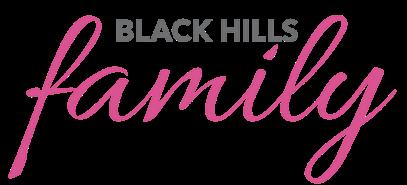












































Words

The Black Hills medical community offers a wide variety of options for allergy needs — from traditional medicine to homeopathic pathways. We checked in with a local naturopath to get her take on the latest trends and options for care.

Lindsey is a licensed Naturopathic professional. Her expertise may help relieve allergy symptoms; like any treatment, however, individual results vary.

Allergies can touch your life in a number of ways — from minor annoyance to debilitating pain. It’s estimated that more than 80 million people in the United States have allergies, according to the U.S. Centers for Disease Control and Prevention (CDC). One out of 3 adults and one out of 4 children report having a seasonal allergy, eczema or food allergy.
Lindsey Braach, who is a Traditional Naturopath and Clinical Homeopath in Rapid City, is on a mission to help people feel better and change the way they view their allergies. “I want to encourage others to get curious about the symptoms they are experiencing,” she said. “Look at them as a red flag from the body and explore the deeper meaning. Instead of being annoyed by the allergy symptom, assess areas of your life where perhaps you need to change habits or support detoxification.” Sometimes, she said, people might need to also address emotional stressors, which can also be processed on a physical level inside of cells.
Lindsey has had a passion for holistic health her entire life. Her father is a Naturopathic Doctor in Idaho. “He raised me to honor my body’s symptoms as messages — to be curious about what my body needed and then give it more of the good,” she
explained. That deepened when she had her own children.
“I was able to see the power of holistic health from a different perspective — it was powerful to be able to treat my own children at home, employing the principles I had learned growing up,” she said.
In 2022, Lindsey finished her education and in 2023, opened the doors to her own private practice, Black Hills Natural Paths. Lindsey now works with children, youth and adults and uses well-researched nutritional, herbal and homeopathic supplements to encourage the body’s inherent self-healing process.

“I’m really passionate about offering a more whole body perspective to health and wellness,” she said. Lindsey has noticed an increase in the number of people saying they feel like their allergies have worsened. There are several factors that could be contributing to that, Lindsey said.
“In the past 4-5 years we have been burdened with a lot of environmental toxins as well as emotional stressors (as a society),” she said. “I think that a lot of autonomic nervous systems have taken over and that has led to diminished immune systems that then respond more severely to allergens.” Lindsey cautions against constantly medicating allergies with pharmaceuticals. “Holistic health is about expression and addressing the symptoms at a root level to bring them out,” she said.
One of the areas of the body she pays most attention to when working with patients is the liver, which is the largest internal organ in the human body, Lindsey said, and one of the most important when it comes to the discussion around allergies.
The liver is the body’s primary detox organ, Lindsey said. “It’s a true multitasker,” she explained. “Every day, it filters your blood, breaks down hormones, processes nutrients and neutralizes toxins from food, water, medications and even your environment.”
But sometimes the liver can get overburdened or sluggish, which can indirectly or directly lead to a diverse number of allergy symptoms. The first is toxic load and liver congestion.“When we’re exposed to more toxins than the liver can efficiently process, whether from processed foods, alcohol, chemicals, mold or chronic stress — the liver becomes sluggish,” she

Stats in the U.S.
Allergic reactions affect millions of Americans every year. From seasonal sniffles to food sensitivities, the CDC’s 2021 data shows just how widespread these conditions are.
Percent with any allergy: 31.8%
Percent with seasonal allergy: 25.7%
Percent with eczema: 7.3%
Percent with food allergy: 6.2%
Number of physician office visits with allergic rhinitis as the primary diagnosis: 4.1M
said. “This can lead to a backlog of unmetabolized substances circulating in the body.” An immune system can also get confused, Lindsey said, which means that an overburdened liver is impacting the gut and immune system. “Toxins that aren’t properly cleared may trigger systemic inflammation or immune dysregulation, leading the body to mistakenly treat harmless substances as threats resulting in rashes, hives, sneezing, congestion or eczema,” she said. It often leads her to guiding her patients to holistic support of the liver, so they experience less reactivity.
“When we support the liver through nourishment, hydration, mineral balancing, gentle detox practices and avoiding unnecessary toxic exposures, the body can process histamine more effectively, calm the inflammatory response and reduce allergic reactivity.
This explanation of liver functions isn’t always what people expect to hear when they’re searching for answers about their allergies. Americans are bombarded with allergy medicine commercials, but those are geared toward synthetics that shut down or suppress the symptoms, Lindsey said. “They never actually address the root cause but rather, cover up the symptom,” she said. “Symptoms are our body’s way of asking for help and blowing the whistle that it is overwhelmed in some way and we need to change something.”

A Traditional Naturopath like Lindsey uses complementary, natural therapies and individualized care to support overall health and wellness.

“I’m really passionate about offering a more whole body perspective to health and wellness.”
- Lindsey Braach














Many very active, young adults and teenagers who experience hip pain stop participating in sports and other physical activities because they are unable to get a solution to their discomfort, or their pain is misattributed to growing pains or similar body changes. Often, these once active young adults and teenagers are not aware that they can seek the second opinion of a specialist.
Orthopedic Physicians Eric Krohn, D.O., and Kenneth Milligan, M.D., head the Monument Health Hip Preservation Institute with a goal to treat patients with hip pain for which the cause has not yet been identified. Because of the nature of hip dysplasia and similar conditions, many hip patients—especially young ones—require diagnosis and care backed by specific, orthopedic training. The Hip Preservation Institute is your resource for getting accurate diagnosis and customized treatment designed to preserve hips, so that you can live a full, active life without worry about discomfort, pain or further damage.
Consisting of Orthopedic and Sports Medicine Physicians, a General Surgeon and Physical Therapists, the Hip Preservation Institute specializes in performing the periacetabular osteotomy (PAO) procedure, which is a minimally invasive surgery that involves rotating the hip socket into a better position to alleviate pain and prevent early arthritis.
The ideal age for the surgery is between 12 and 25 years old, as it allows for maximum cartilage preservation and can delay total hip replacement surgery until old age. It is important to recognize and treat hip dysplasia early to prevent longterm complications, such as arthritis, and to ensure a better quality of life.
To learn more about the Hip Preservation Institute and how you can rediscover pain free movement and preserve your hips for a lifetime, go to monument.health/ hippreservation or call 605-755-6100 to schedule an appointment.






Welcome to the Black Hills Family Birthday Club!

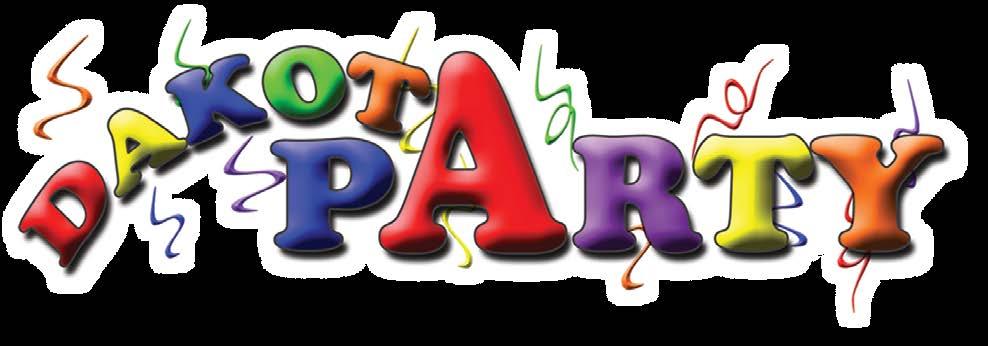

Congratulations to our July winner Clark!
For a chance for your kid to win, make sure to scan the QR code on this page and register.
Each month, we’ll draw one lucky name to win a birthday prize pack filled with fun surprises from our party-loving friends from all over the Black Hills.
In every issue, we shine a spotlight on one of our awesome partners — and this time, we’re celebrating with Dakota Party, your locally-owned headquarters for all things party! From birthdays and graduations to weddings and holidays, Dakota Party helps every celebration shine.
Discover more about this fabulous place by visiting dakotaparty.com. Want in? Scan the QR code to register your child for free! Scan the QR to learn more and register.


























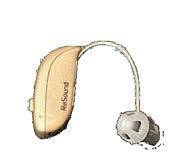






Kids need space to feel seen and wanted. We, as parents, need space to listen and get a glimpse at their ever-evolving world.
One-on-one time with kids, parent–child dates — or whatever you want to call them — might just seem like a nice idea or a trend, but their benefits are backed by solid psychology and research: this time between parents and kids is one of the simplest, most powerful ways to build connection, trust and emotional health. In the busyness of family life — especially in homes with multiple children — it’s easy for quality time to get diluted in the chaos. That’s where intentionally setting aside even an hour for just the two of you can make a big impact.
Studies show that regular, meaningful parent–child interaction improves kids’ self-esteem, academic performance and emotional regulation, while also reducing behavioral issues and symptoms of depression. For the parent, these moments offer a chance to slow down, tune in and stay connected to a child’s evolving world. Whether it’s a hike, hot cocoa at the park, or a
shared book on the couch, the activity itself matters less than the attention. When done consistently, these “dates” become a rhythm that communicates: I see you, I choose you and I care about who you are becoming. It’s not about being elaborate. It’s about being present. And in a world constantly pulling families in different directions, that presence can be the anchor kids need most.
Ok, so we’re all convinced — one-on-one time with the kids creates some invaluable space to connect, listen and share. We’re going to help you a little bit more: we’ve created nine different kid-parent dates in the Black Hills. Each is specially curated to maximize fun, be conducive to conversations and be a catalyst for making memories. We only had space for nine Black Hills communities, but every town in the region offers their own unique twist to these important times together.
Head to a local ice cream shop like Silver Linings or Armadillo’s. If you’re looking to pull out all the stops, consider dressing up and making a reservation at a classy downtown restaurant. It makes for one really nice, memorable experience. But then again, there’s nothing wrong with a (free) walk through Canyon Lake Park or short hike around M Hill.




This Northern Hills community is known for its stunning scenery and its outdoor recreation. Grab some food and consider a creek-side picnic. Look for spots to safely wade into Spearfish Creek to cool off on sunny days. If the weather is more brisk, get cozy with the kiddo at one of the cool local coffee shops.
In the Southern Hills, the options for one-onone connections are practically endless. Get a nice dinner, tour a museum, you could even slow down and book a ride on the 1880 Train. This historic steam engine will chug up and down hills from Hill City to Keystone, and provide ample time to connect (each leg of the journey takes about an hour).



The Fort Meade Recreational Area is always a great place to kick back and relax but also stay really active. Picturesque views and miles of hiking and biking trails makes the Fort Meade Recreational Area a wonderful spot for a little adventure.




Ahhh. Hot Springs. A town founded on rest and relaxation. The Mammoth Site and Evans Plunge are both outstanding ways to spend some mommy-and-me or daddy-and-me time. A simple stroll downtown and alongside the creek is also a fun, easy way to have a good walk and talk.


One of the most iconic communities in the Black Hills. A nice, leisurely drive through the Wildlife Loop is prime time for conversations and memories. If the need to move your body strikes, just chart a course to the nearest hiking trailhead and continue the adventure on foot. For food and refreshments, the restaurants and coffee shops of Custer make for a tasty pit stop.

The Black Hills town closest to Mount Rushmore is a playground just waiting to be discovered. Explore your competitive side at Sprockets Fun Foundry or if you and your mini-me are feeling really adventurous, try out the high speed fun of Rush Mountain Adventure Park. Let the memories and conversations flow.




History comes alive in Deadwood. And so can the parent-child conversations. A nice stroll through the historic streets is always a memorable experience. So is visiting the Historic Adams House Museum to see all of the fun, crazy, fascinating items on display there. Outlaw Square is also a blast, especially in the winter months where you can enjoy the ice skating and ice bumper cars.
Perched high in the Northern Hills, the town of Lead boasts stunning views and plenty of high-altitude fun. On a mild day, Manuel Brothers Park is perfect for an afternoon outdoors, featuring sparkling fountains and a big variety of play equipment for all ages. Lead also offers a couple of fascinating museums, providing both an enriching educational experience and a memorable way to explore the town’s history.


Every once in a while, your family needs a change of scenery — whether for a day or a weekend. These two hand-picked adventures are perfect for that. Thanks to our sister publication, Black Hills Visitor, for pointing us in the right direction on these family day trips. And remember, play is a vital part of a family’s mental health, so make time for little trips, big trips, mini moments and everything in between.
Without further ado, here are our two big adventures: one west and one east.


Head west across state lines into Wyoming. Devils Tower is the most dramatic landmark in eastern Wyoming, where history, culture, geology and a sense of adventure all come together. President Theodore Roosevelt named this striking monolith the first National Monument in American history. The Lakota stories that surround the monument are fascinating and offer a great cultural connection for your family. The hike around the base of the Monument takes about an hour or more. Keep an eye out for prairie dogs—you might even spot a climber or two braving the ascent.
Head east to the Badlands, a National Park that feels like landing on another planet. For the prehistoric-lover in your family, the Badlands are a fossil treasure trove. Be on the lookout for wildlife, too, including bison, pronghorn, prairie dogs and the elusive black-footed ferret. Hikes abound here, and the scenery is unforgettable. Pack a picnic and make a day of it. You’ll also be close to the community of Wall and the world-famous Wall Drug, an iconic stop that’s a blast for kids of all ages.



Want to wake up excited for life — whether you’re 19 or 90?

Words by Kayla Gahagan
Photos by Greg Geiger
Vi Stoltz is stepping into her ninth decade of life — and she’s hungry for more. “I believe I can do anything,” Vi said, with a simple shrug and smile in the hallway of Westhills Village Independent Living. “Why not?” Vi has lived at Westhills Village for seven years and is the face of what experts would call aging well — hitting on a triad of elements to maintain her health including physical activity, good nutrition and socialization.
It’s all about brain health, said Erin Smith, who has served as the Community Life Director at Westhills for 14 years. “Two elements really go hand in hand: exercise and nutrition,” she said. “Those really are the two things you can control to help your brain health.”
Simply being around other people can help too. Vi exercises and volunteers nearly every day of the week. She helps with exercise classes and birthday parties, started the village newsletter and is involved in a writing group, senior Toast Masters — a publicspeaking club — and a scrabble group.
The excitement of her upcoming birthday party mimics the energy of a youngster. “We’ve ordered 13 dozen bundt cakes and my family is coming,” she said, before joking that if 100 people don’t show up, she’s “gonna raise a fuss.”
Not everyone has to do as much as Vi, Erin said, but a little bit every day can make a difference in quality
of life long-term. She has continually witnessed the positive effects of residents pursuing health. One woman moved into the Village after her husband passed and immediately locked into the exercise classes to help her heal.
“She just blossomed,” Erin said. “She used to exercise, but she got here and really did a lot more because it was at her fingertips. Her love of healthy living helped her cognitive reserve.”
Several residents gathered at the Village on a recent morning to take an exercise class hosted by Jan McGrath, owner of Pilates Whole Body. She created a NeuroPower exercise system (see next page) and does both in-person and zoom classes. The movements are small, slow and steady, but important.
“It’s about reconnecting the body and the brain so they know what to expect when they have an unsafe situation,” Erin said, which could include something like stepping off a curb or getting thrown off-balance.
Jan said linking class movements to everyday life is essential, especially for older adults. “I use simple, neurocentric exercises designed to strengthen the brain-body connection — like safely getting up from a chair, reaching overhead, turning quickly, or walking on uneven ground like grass or gravel,” she said. “These are real challenges many face as they age.”
Phyllis Walters has lived at Westhills for three months. She has exercised regularly for years, but she has seen an improvement in her macular degeneration after participating in Jan’s class.
“My peripheral vision is better,” she said.
Erin said healthy lifestyle changes at an early age, even for someone with a genetic disposition for Alzheimer’s or dementia, can change the trajectory of their health when they are elderly.
“It’s like Type II diabetes,” Erin said. “The way we live our lives can ward off some of the dementia symptoms.”
Social activity stimulates parts of the brain that even diet and nutrition can’t touch, which is why living in a community during an older age is a benefit. In a long-term study by the National Institute on Aging, researchers analyzed data from more than 7,000 participants age 65 and older and found that high social engagement, including visiting with neighbors and doing volunteer work, was associated with better cognitive health in later life.





Westhills Village offers a vibrant senior community with independent living, wellness programs, and compassionate care in Rapid City.
Jeanne Kirsch has lived at Westhills for a decade. “This community is unbelievable,” she said. “If I’m struggling with depression, I just get out of my room. I attribute the shape I’m in to this place and all that is offered.”
Erin just wants to keep residents moving, and encouraged. Westhills also offers a swimming pool, dance classes, billiards and an annual class called Boost Your Brain. “Our brain health can be worked on from a very young age, there’s no wrong time to start and it’s never too late to start exercising,” she said.
Vi is game for it. No excuses, she said. “You can do anything here,” she said. “If there isn’t anything you like to do, then start it.”
The brain never stops learning, it just needs the right input, explained Jan McGrath. Jan has created a NeuroPower exercise system that she teaches at Westhills Village to help residents reduce pain, improve movement and rebuild confidence.
Jan specializes in neuroplasticity, which is the brain’s built-in ability to rewire, adapt, and grow at any age. “Yes, the aging brain is more prone to decline, but it’s also full of untapped potential,” she said.
The brain is a ‘use it or lose it’ organ, she explained. “With the right targeted easy brain-specific exercises, you can train it to move better, feel better, and live better. This is the way to future-proof your brain and movement quality.”
During a recent class, Jan encouraged residents to move through exercises at their own pace, including mini squats to test knee strength, walking in place with the head turned to the wall or standing and placing one foot behind to tap their toe.
Mary Burnett has scoliosis and Jan’s teaching has made a difference. “One of my sides is weaker and I can already tell a difference,” she said. Many traditional exercise programs focus on movement from the neck down, on muscles and joints, Jan explained. “They treat the symptom, but miss the real driver — your brain,” she added.

A “brain-first approach” focuses from the neck up and puts the brain in the driver’s seat, where it belongs. “Imagine your brain as the conductor of an orchestra — when it’s tuned and focused, your body moves with effortless grace and confidence,” Jan said.
Those brain signals can become fuzzy, especially as you age, making balance unstable and movement painful. “Too often, we wait until we’re seniors to pay attention to brain health — but the truth is, the best time to strengthen it is now, before decline sets in. Training the brain sharpens those signals, helping your muscles respond quicker and smoother. This isn’t just about relieving pain — it’s about improving your stability, preventing falls, enhancing movement quality and overcoming the fear of falling that keeps so many people sidelined.”
Jan said she’s passionate about her work because she knows it’s making a difference. “My goal is simple: to help every person regain their freedom of movement — free from fear, hesitation, or doubt,” she said. “People can move through life unanchored by pain or the fear of falling. They gain real, lasting independence — and the courage to fully embrace life at any age.”

According to Jan McGrath, owner of Pilates Whole Body, keeping your brain and body connected is one of the best investments you can make in lifelong health. The way we move (or don’t move) when we’re younger sets the stage for how strong, steady, and confident we feel as we age. Here are a few eye-opening facts about why starting brain-body training early can make such a big difference.
• Habits formed in teens and young adults shape longterm brain-body health.
• Movement and balance challenges can start as early as your 40s, making brain-body training important well before old age.
• Eighty-percent of chronic pain is linked to disrupted brain-body communication — not just physical injury.
• Brain-based movement training helps improve reaction times by 20-30%, enhancing overall movement quality.
• Neurocentric balance exercises can reduce the risk of falls by up to 40%.
• By age 70, the brain can lose up to 15% of its weight and volume, affecting balance and memory.
• Nearly 30% of adults over 65 stop exercising regularly, increasing health risks.
• Falls are the leading cause of injury-related deaths in adults 65 and older; almost 1 in 3 older adults fall each year.
• Brain-based movement training can reduce fall risk by up to 40% and improve reaction time by 20–30%, helping you respond faster to trips, slips, and sudden changes.
This mix of late 90s and early 2000s hits brings back all the nostalgia without the skip-button stress. Perfect for carpool sing-alongs, kitchen dance parties and reminding yourself that you still got it, mom.

“I Want It That Way”
Backstreet Boys (1999)
The ultimate boy band anthem—catchy, harmless and instantly recognizable. Moms get the nostalgia, kids get the sing-along chorus.
“Oops!... I Did It Again”
Britney Spears (2000)
Playful, fun, and upbeat. Britney at her pop princess peak — perfect for a living room dance-off with your
“MMMBop”
Hanson (1997)
An instant serotonin boost. Its catchy, upbeat vibe makes it great for carpool sing-alongs—and your kids will love the “nonsense” chorus.
“All Star”
Smash Mouth (1999)
Thanks to Shrek, this is millennial mom and kid approved. A feel-good anthem that’s silly, energetic and instantly recognizable.
“Bye Bye Bye” NSYNC (2000)
Signature choreography optional but encouraged. This one still hits just as hard as it did when you were crushing on JT in frosted tips.
“Hey Ya!”
OutKast (2003)
Quirky, fun, and nearly impossible not to dance to. Kids love the rhythm, moms love the nostalgia — it’s the perfect closer.
“Soak Up the Sun”
Sheryl Crow (2002)
Laid-back and beachy, this track feels like sunshine. Moms will love the chill vibes, and kids can bop along too.

“Wannabe” Spice Girls (1996)
Because what’s more millennial mom-core than the Spice Girls? Pure fun, female friendship energy and easy to sing along to with your kids.
“Unwritten” Natasha Bedingfield (2004)
Millennial anthem alert. It’s positive, empowering, and has that open-the-car-windows-and-sing energy.
“You Drive Me Crazy” Britney Spears (1999)
Another fun, danceable Britney track. Nostalgia for moms, pure pop happiness for kids.
Mindful Melodies
Big thanks to DJ Marek for putting together this incredible playlist! Remember, research shows that great music— no matter the decade— can boost your mental health.



Every few years a new weight-loss fad grabs the spotlight. Right now, it’s GLP-1 drugs like Wegovy. Are these types of drugs just another passing craze, or are they a true game-changer in weight loss?

Words by Stephen Simpson


Weight loss can be hard. Really hard. So when a new class of drugs called GLP-1 receptor agonists started making headlines a few years ago, people took notice. Celebrities posting about Ozempic may have turned heads, but for many, the real questions are: Do they work? Who should take them? And are they worth the hype — or the price tag?
Zach Peterson, PA-C, is a Primary Care Physician Assistant at Monument Health Hill City Clinic. He’s also a passionate expert in weight management and has extensive experience guiding his patients concerning GLP-1 drugs. Comprehensive clinical trials show these drugs deliver real, measurable results. But Zach explained that GLP-1 medications are not some overnight magic solution to weight loss.
“I caution that kind of thinking,” he said, “because with these medications, they are indicated for long-term weight loss strategies. In other words, when we put a person on either Wegovy or Zepbound for weight loss, the conversation we have to have with the individual is that this medication should be used long-term to manage weight loss. We don’t want them on the roller coaster any longer, losing weight and then gaining it back.”
GLP-1, or glucagon-like peptide-1, is a hormone naturally found in everyone’s gut. It helps regulate appetite and digestion. Semaglutide is a synthetic version of this hormone, designed to work longer and help with diabetes or weight management. In pharmacologic doses, these drugs slow gastric emptying and signal the brain that it’s time to stop eating, reducing hunger and helping patients eat less. Initially discovered in the 1980s and studied for type 2 diabetes in the 1990s and 2000s, researchers noticed a consistent side effect: significant weight loss. It wouldn’t be until 2014 that the FDA approved the first GLP-1 drug for weight management.
Today, Body Mass Index (BMI) is the main factor in determining who can use these drugs for weight loss. Patients with a BMI of 30 or higher may qualify, regardless of other health conditions. Those with a BMI between 27 and 30 may need additional comorbidities, like high blood pressure, high cholesterol or diabetes.
From commercials to headlines, GLP-1 drugs are everywhere. But with so many names — Wegovy, Ozempic, Mounjaro — how do you keep them straight? Use this guide to help inform your conversation with your healthcare provider and see which option might fit your needs.
Brand Names: Ozempic, Wegovy, Rybelsus
Primary Use: Type 2 diabetes (Ozempic, Rybelsus), weight loss (Wegovy)
Key Details: Semaglutide is a synthetic version of the GLP-1 hormone. Ozempic and Wegovy are injectable forms, and Rybelsus is the only oral GLP-1 medication approved by the FDA.
Brand Names: Victoza, Saxenda
Primary Use: Type 2 diabetes (Victoza), weight loss (Saxenda)
Key Details: Liraglutide was the first GLP1 receptor agonist approved for weight management. Saxenda is approved for chronic weight management in adults and children aged 12 and older.
Brand Names: Mounjaro, Zepbound
Primary Use: Type 2 diabetes (Mounjaro), weight loss (Zepbound)
Key Details: Tirzepatide is a dual GLP-1/ GIP receptor agonist. Mounjaro is approved for type 2 diabetes, and Zepbound is approved for chronic weight management in adults with at least one weight-related comorbidity.
A Note:
You might notice that each of these drug types feature a version that treats type 2 diabetes and a version that is intended to help with weight loss. Drugs like Wegovy and Ozempic are identical, but because of FDA rules, drug companies have to name and market drugs differently for their different intended uses.




















Obesity is more than cosmetics. It’s linked to heart disease, diabetes, chronic kidney disease, sleep apnea, arthritis and even several cancers. Reducing BMI by even a few points can dramatically increase the probability of avoiding these major health concerns.



















GLP-1 meds aren’t just about your waist—they’re a tool for a healthier, more vibrant lifestyle.
So how can GLP-1 drugs help someone with obesity? In some recent trials, GLP-1 drugs were compared head-to-head with bariatric surgery. One study found patients who were prescribed these drugs lost an average of 50 pounds over 15 months — a figure previously only seen with weight-loss surgery. “The thing to keep in mind,” Zach pointed out, “every one of these trials also included some fairly intense lifestyle modifications — exercise and diet.”
Patients taking a GLP-1 drug are encouraged to get at least 150 minutes of activity per week and focus on healthy eating. “The first visit that I always have with a patient is where I’m trying to figure out what their baseline is,” Zach said. “If they’re not eating very healthy and they’re not exercising at all, I want to incorporate that first and see if that can be the catalyst to long-term success.”
Portrayal in the media has made these drugs seem like a shortcut, but the reality is more complicated. GLP-1 therapy is meant for long-term weight management, not short-term fixes. Abruptly stopping the medication can lead to regained weight, sometimes even more than before. Patients must also learn to adjust behaviors around hunger cues and emotional eating.







































Patients with a history of pancreatitis or rare thyroid cancers are generally excluded. The most common side effects are nausea and vomiting, usually related to slowed digestion. Those with chronic constipation or reflux issues may also struggle taking these drugs.
Cost is another consideration. Branded medications can run $500 to $650 per month without insurance. Some compounded alternatives from pharmacies can be cheaper, around $250 to $350 monthly, but quality and regulation are less certain. Insurance coverage varies, and ongoing affordability is a crucial factor in planning long-term therapy.
It’s also worth noting that GLP-1 drugs are injections, typically administered once a week. For those with a needle phobia, the consistent jabbing is something to keep in mind. Oral options exist, like Rybelsus. “It hasn’t been shown to have near the weight loss effects because it has to go through stomach acid and gets broken down,” Zach said. “An effective oral option may come down the road sometime.”
The drugs are not just about losing pounds; they’re about preserving the right kind of weight. Without exercise, patients may lose lean muscle along with fat. “Without exercise, you could be sacrificing a lot of lean mass, which actually burns three times the amount of calories that fat does.”
For the right patient, GLP-1 drugs can be transformative. Zach has seen individuals who tried everything — even bariatric surgery — make significant progress in their weight by combining these medications with lifestyle changes. Some of his patients have lost more than 60 pounds and maintained that loss. “It can be a game changer,” he said. “But a patient’s mindset matters. These drugs are a tool, not a cure.”
Genetics play a role, too. Some people are simply predisposed to gaining weight. GLP-1 medications don’t change genetics, but they can help manage appetite and improve outcomes when combined with proper diet and exercise.
Ultimately, GLP-1 medications represent a major step forward in the fight against obesity and related conditions. They are not a magic solution, but when used responsibly, they can help patients achieve and maintain meaningful weight loss. As Zach put it, “Generally, these drugs help tremendously … It’s literally the first time in history that it’s been proven that people can lose 50 pounds with anything other
NEUROPROTECTION
HEPATOPROTECTION
GLP-1 meds help with weight loss, offering your vital organs some extra protection.









































SLOWING GASTRIC EMPTYING


























































NEPHROPROTECTION
than bariatric surgery.” Still, he emphasized, “These drugs aren’t a silver bullet.”
For those interested in GLP-1 therapy, Zach recommends starting by speaking with a primary care provider. “Having a conversation with your provider — dedicating a visit to discuss lifestyle changes and ways to improve health, including GLP-1 medications — is a great first step,” Zach said. “But sometimes providers aren’t fully focused on medically directed weight loss, and that’s where I can come in. There are also other providers throughout the Black Hills, like the Monument Health Bariatric Clinic in Rapid City who can also offer this kind of specialized help.”
Zach is a Primary Care Physician Assistant at Monument Health Hill City Clinic, specializing in preventive medicine, fitness and diabetes care. He’s a certified personal trainer and trained with top thought leaders at Pfizer and Novo Nordisk.




















The experts at West River Mental Health want you to know that help is just a call away.

CEO of WRMH, Amy Iversen, MS, is passionate about leading a team that is making a difference for Black Hills families. “Regular people have struggles,” she said, “So we really want to ease some of the stigma associated with it, so people aren’t struggling alone.”
When your child is going through a tough time, whether it's adjusting to a big life change or just feeling overwhelmed, it is natural to wonder when a little extra support might help. Every child faces challenges, and sometimes having a professional to talk to can make all the difference in helping them feel more confident and understood. For the team at West River Mental Health (WRMH), the answer to that question is simple: the best course is to always ask for help.
Mental health challenges are more common than many people realize. One in five people have a diagnosable mental health condition. “Most of us know someone silently struggling — but because of stigma, we don’t talk about it,” explained Amy Iversen, MS, CEO of WRMH. “That’s something we’re working hard to change.”
That stigma is especially strong in communities like the Black Hills, where self-reliance is a part of everyday life.
“People don’t want others ‘in their business,’” Amy said. “But just like physical health, mental health deserves care and attention. If something’s not right, don’t wait.”
Early intervention is key in many cases of mental health. “The sooner you get help, the better. That’s true for kids, adults and families. With early treatment,
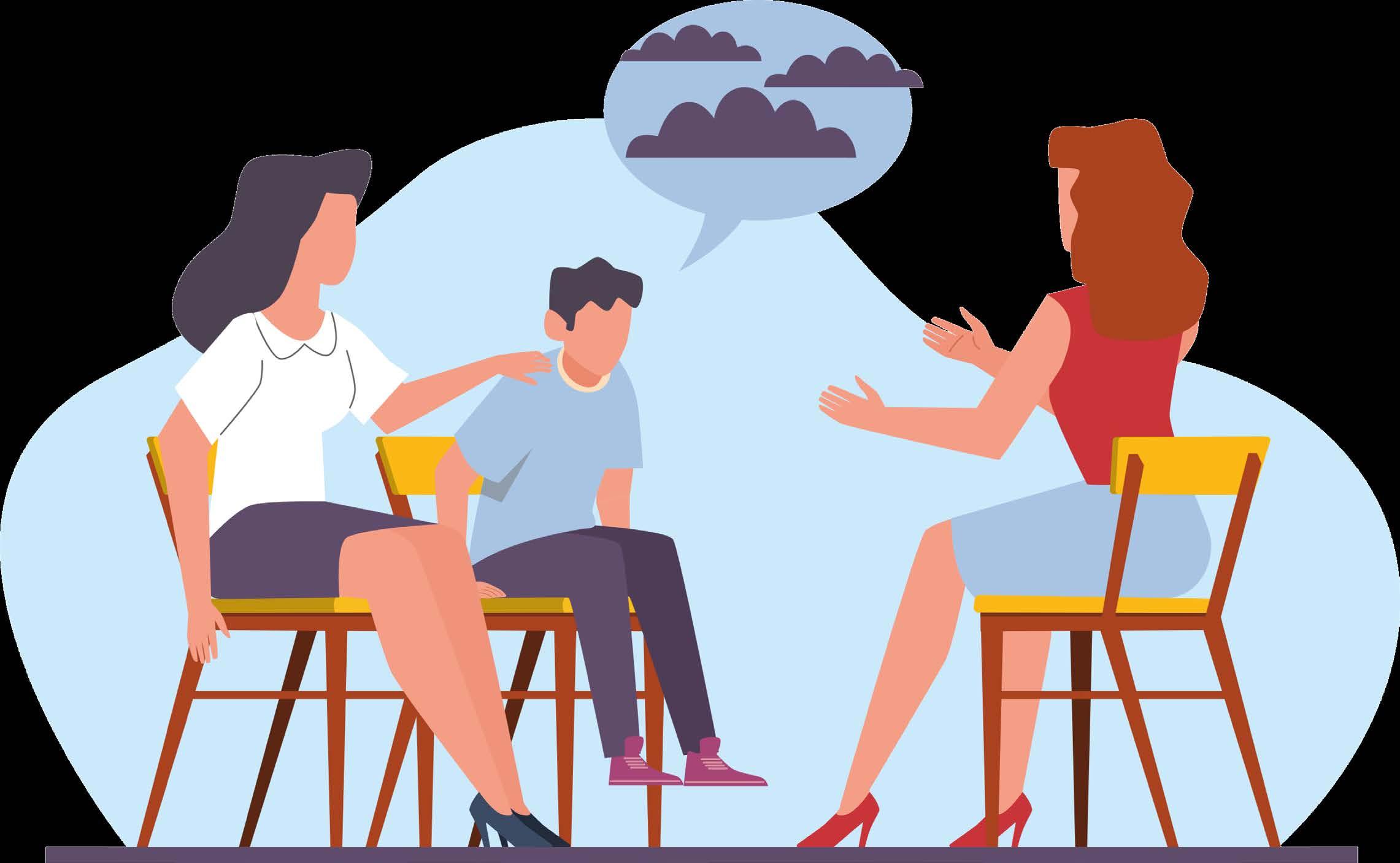
you’re more likely to avoid long-term struggles,” Amy said. "This is especially important when it comes to more serious mental health conditions, such as bipolar disorder or schizophrenia, which often begin to appear during adolescence. With early and consistent treatment, many teens can manage these conditions well and lead fulfilling, balanced lives. However, when care is delayed or disrupted, these challenges can become more difficult to manage over time."
The perception of mental health, however, is improving in the Black Hills. "One positive shift that came out of the COVID-19 pandemic is a greater awareness that our life circumstances can significantly impact mental health and that it’s absolutely OK to seek help. We understand that privacy matters, which is why our locations
are discreet and all services are completely confidential, just like any medical visit."
Cost should never be a barrier when it comes to mental health. WRMH accepts Medicaid and most insurance, offers a sliding fee scale and won’t turn anyone away due to inability to pay. Amy said. “We just want people to know: it’s OK to get help. We want to make that as easy as possible.”
Telehealth, in-school, in-home and traditional in-office services are all available, with flexibility to meet clients where they’re most comfortable.
As a Community Mental Health Center serving 10 counties and over 20,000 square miles in western South Dakota, West River Mental Health (formerly known as Behavior Management Systems) provides therapy, crisis intervention, case management and more to support individuals and families across the region. “We offer outpatient therapy for people of all ages — from young kids to the elderly,” said Amy.
Their services include trauma-informed care, certified play therapy, family counseling and case management for families navigating challenges like food insecurity, housing instability and other life challenges. “Sometimes we’re working with a child, and we realize the family needs help, too. So we support the whole unit which provides greater success to the family’s journey,” Amy explained.

One of the most impactful ways this organization supports families is by placing dedicated staff directly in local schools and the community. When teachers notice a student who may need extra support, they can refer them to our team who step in with compassion and understanding. “They build strong relationships and help families get the support they need early on,” Amy shared. “And when therapy is the right next step, we’re there to make that happen too — quickly and with care.”
To get in touch with WRMH, scan this code: or call (605)343-7262
WRMH also operates a 24/7 crisis facility for adults called Pivot Point. People in crisis can walk in, speak to a counselor, and get immediate support. “When a loved one is suicidal or in serious distress, families often don’t know where to turn. We’re here for those moments,” Amy said. If you or someone you know is experiencing thoughts of suicide, depression, anxiety or difficulty coping with life’s challenges, help is available. Pivot Point provides crisis assessment and stabilization services for adults (18+) facing a mental health crisis, including comprehensive evaluations and personalized safety plans.
Adaptogens? Functional Medicine? Nootropics? Wellness buzzwords are everywhere — and it’s easy to get overwhelmed. Here in the Black Hills, we’re fortunate to have access to a wide range of knowledgeable wellness professionals. And with so many experts to choose from, brushing up on a few key terms can make it easier to connect with the right ones.
AACUPUNCTURE
A traditional Chinese therapy using tiny needles to stimulate points on the body. Can help with everything from pain relief to stress.
ADAPTOGENS
Herbs and mushrooms (like ashwagandha, rhodiola and reishi) that may help the body manage stress.
BBIOHACKING
Optimizing your body and mind through data, diet and sometimes gadgets. Think sleep trackers, cold plunges and sunlight.
BREATHWORK
Conscious breathing exercises used to reduce stress, improve focus or release emotion.
CCLEAN EATING
A loosely defined approach to food that avoids processed ingredients.
COGNITIVE BEHAVIORAL THERAPY (CBT)
A proven, practical form of talk therapy that helps reframe negative thinking patterns and build healthier mental habits.
COLD PLUNGE
A dip in ice-cold water to reduce inflammation, boost circulation and provide other benefits. Very trendy right now.
DDEPRESSION
A common but serious mood disorder that affects how you feel, think and function. Never brush this off in yourself or others.
DETOX
A buzzy word for flushing out toxins. Your liver already does this beautifully.
EESSENTIAL OILS
Concentrated plant extracts used for scent, mood and minor aches. Sniff peppermint for focus; rub lavender on your temples to chill.

FFLOAT THERAPY
Also called sensory deprivation: you lie in a saltwater tank with no light or sound. Relaxing or freaky, depending on your tolerance for silence.
FUNCTIONAL MEDICINE
A patient-centered approach that looks for root causes of illness (gut issues, inflammation, hormone imbalances, etc.) instead of just treating symptoms.
GGRATITUDE PRACTICE
A daily habit of writing or reflecting on what you’re thankful for. Proven to improve mood and resilience.
GROUNDING
Connecting with the earth by walking barefoot, sitting on grass or simply taking deep breaths and noticing your surroundings.
GUT HEALTH
The idea that your digestive system is linked to every system in your body: immunity, mood, sleep, even skin. The gut microbiome is paramount in this discussion. A healthy gut = a happy you.

HHOLISTIC WELLNESS
A whole-body approach that considers physical, emotional, social and spiritual well-being.
HORMONE BALANCING
Supporting natural hormone levels through diet, sleep and sometimes supplements or treatment. Popular among women 35+ navigating perimenopause.
IINSOMNIA
Difficulty falling or staying asleep. A common mental and physical health issue often treated through sleep hygiene and behavioral therapy.
INTERMITTENT FASTING
Eating within a set time window (like noon–8pm). Popular for weight management, energy and metabolic health.
IV THERAPY
A service where water and vitamins are delivered straight into your bloodstream, with the goal of improved energy, immunity and hydration.
JJUICING
Extracting liquid nutrients from fruits and vegetables. Refreshing and nutrient-rich.
LLICENSED THERAPIST
A professional trained to help with mental health issues, emotional struggles and life transitions. Many offer inperson or virtual sessions. Licensed therapists in South Dakota must have a masters degree from an accredited school, among other rigorous qualifications.
LIFE COACH
A personal guide for setting goals, staying motivated and moving forward. Less clinical than therapy, more action-oriented.
MMASSAGE THERAPY
More than relaxation — it can ease pain, improve circulation and lower stress hormones.
MINDFULNESS
Paying attention on purpose, without judgment. Practiced through meditation, breathing or simply noticing your surroundings.
MOVEMENT
Any physical activity that gets your body going. Doesn’t have to be a gym thing. Dancing, walking, gardening? All count.

NNOOTROPICS
Substances (natural or synthetic) used to enhance brain function, such as focus, memory, and mental clarity. They range from common stimulants like caffeine to herbal supplements and prescription medications.
NUTRITIONIST
A food and health expert. (Note: “Nutritionist” is less regulated than “Registered Dietitian,” which requires formal education.)
RRED LIGHT THERAPY
A low-wavelength light treatment said to reduce wrinkles, speed up healing and ease joint pain. Backed by science.
RESILIENCE
The ability to bounce back from challenges. Strengthened through social support, mindset and healthy coping strategies.

PSPLANT-BASED
A diet focused on fruits, veggies, legumes and whole grains. Some do it full-time; others just try “Meatless Mondays.”
PROBIOTICS
Live bacteria that support your gut microbiome. Found in yogurt, kimchi or supplements.
PSYCHOTHERAPY
Also known as talk therapy. Can help treat anxiety, depression, trauma and more. There are many types and approaches.
SELF CARE
Any action that supports your well-being. Can be a bubble bath, setting a boundary or turning off your phone at 9 p.m.
SLEEP HYGIENE
Habits that promote better sleep: consistent bedtime, cool room, no screens before bed, etc.
SUPPLEMENT STACK
A personalized combo of vitamins, herbs and nutrients taken daily to support health goals.
TTALK THERAPY
See: psychotherapy. An essential part of mental health support and personal growth.
WWELLNESS WHEEL
A tool that shows eight areas of well-being: physical, emotional, social, spiritual, occupational, financial, intellectual and environmental.


WHOLE-PERSON HEALTH
A mindset that treats the body, mind and soul as connected — not just a collection of symptoms.
A meditative, peaceful state of mind — and a reminder that wellness is about balance, not perfection.

Hormones are chemical messengers made in your body. They travel through the bloodstream, telling your organs and tissues what to do. Hormones help regulate everything from energy and mood to sleep and appetite. There are more than 50 kinds of hormones that the human body can produce. Here’s a list of some commonly discussed hormones and what functions they play.
Dopamine — Linked to motivation, reward and focus. Often called the “feel-good” chemical.
Serotonin — Helps regulate mood, sleep and appetite. Low levels are often tied to anxiety and depression.
Oxytocin — Known as the “connection” hormone, it’s involved in bonding, trust and emotional closeness.
Endorphins — Natural stress-relievers. Released during exercise, laughter or positive social interaction.
Cortisol — Your body’s main stress hormone. Helps you respond to danger, but high levels over time can wear you down.
Adrenaline (Epinephrine) — Boosts energy and focus in highstress or emergency situations.
Norepinephrine — Similar to adrenaline, but more focused on attention, memory and response to stress.
Insulin — Helps regulate blood sugar and energy levels. Imbalances in insulin are a major factor in diabetes.
Glucagon — Works with insulin to keep blood sugar steady, especially during exercise or fasting.
Leptin — Helps you feel full. Tells your brain when you’ve had enough to eat.
Estrogen — A key hormone that supports brain function, bone health and energy — especially during puberty, pregnancy and menopause.
Progesterone — Helps regulate sleep, mood and the natural body rhythms that shift during different phases of life.
Testosterone — Found in all bodies. Supports strength, energy and focus. Natural levels vary with age and health.
Melatonin — Helps regulate sleep. Produced in the brain when it gets dark, telling your body it’s time to rest.
Hormones affect everyone — kids, parents and grandparents — and changes in hormone levels can impact mood, sleep, energy and even mental clarity. If something feels “off,” it’s OK to ask your healthcare provider if hormones might be part of your wellness puzzle.







Plants can boost our mental health. But what if your thumb is less than green?
By now, you’ve probably heard that plants can be good for your mental health — and the science backs it up. Studies show that even a short amount of time spent around greenery can reduce stress, lower anxiety and boost mood. In fact, a 2015 study published in The Journal of Physiological Anthropology found that interacting with indoor plants helped reduce physiological and psychological stress. Another study from the Journal of Environmental Psychology reported improved attention and well-being after participants spent time with nature — even simulated nature.
But what if you can’t keep a succulent alive to save your life? Don’t worry. You can still reap some of the same calming, creative benefits with a craft that’s inspired by nature, but requires zero watering.
Enter the beaded plant project. This DIY is equal parts fun and therapeutic. The repetitive motion of beading, the tactile experience of working with wire and color, and the freedom to create something entirely unique can offer a surprising amount of mental clarity — kind of like a meditative moment in your day. It’s a way to enjoy “plant parenting” without the pressure. So whether you’re a proud plant parent or a repeat offender in the houseplant homicide department, this craft is for you. Flip the page for supplies, instructions and a few tips — and don’t forget to share your masterpiece with us!


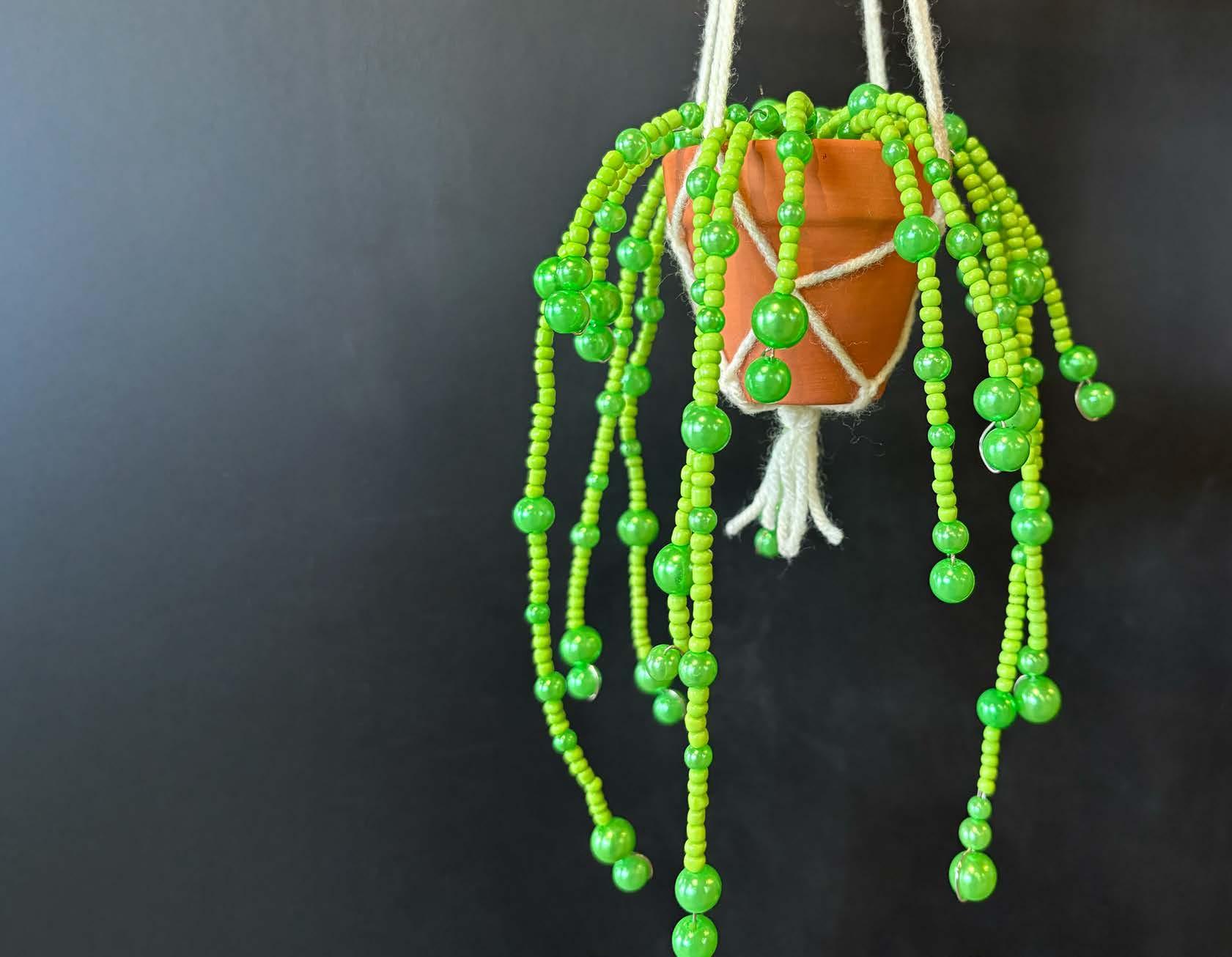
Plants don’t just boost your mood and support mental wellbeing — they can also be an easy and fun addition to your home. This simple plant project is perfect for anyone looking to enjoy greenery without the stress of complicated care.

To start, cut your Styrofoam ball in half. Black Hills Family’s resident crafter, Lyndsay, recommends painting your Styrofoam ball brown so it looks like dirt. Once your paint is dry, apply hot glue to the outer rim of your Styrofoam ball and place inside your terracotta pot to hold it in place.
Using your handy-dandy wire cutters, cut your wire to your desired length. Add one bead — Lyndsay recommends using a larger bead to better keep the wire in place — to your wire length, leaving room to secure the bead at the end of your wire. To do this, use your needle-nose pliers to fold the end of the wire back toward the top of your wire. The wire should now be folded on top of your bead (see figure 1).
Next, add another larger bead on top of your wire. This bead should have both end of wire fed through it to hide the end and protect little hands from wire pokes (see figure 2). Then, add as many beads as you’d like, leaving about two inches of wire exposed. Lyndsay recommends adding a variety of beads — no pattern required (see figure 3).
Once your beads are in place, you’re ready to add your new leaf to your pot. There are multiple ways to do this, so feel free to choose whichever works best for you. One option is to add hot glue to the exposed end of your wire and insert it into the Styrofoam ball. Alternatively, you can insert the exposed wire into your Styrofoam and then apply hot glue to secure it in place. Expect a little trial and error here.
And then repeat this process until your plant is full of as many leaves as you’d like. Be creative! This plant is uniquely yours, and no two plants will look the same.
Do you have a craft you love to make?
Share it with us at editorial@egmrc.com or on social media.
• Green beads (Lyndsay recommends two different sizes or shapes)
• 20 gauge wire
• Styrofoam ball (this should fit inside your terracotta pot)
• Terracotta pot
• Needle-nose pliers
• Wire cutters
• Hot glue gun
• Brown paint (if desired)


• If you have leftover green yarn, you can glue that on top of your Styrofoam to give your plant a mossy look.
• Just have fun with this project!
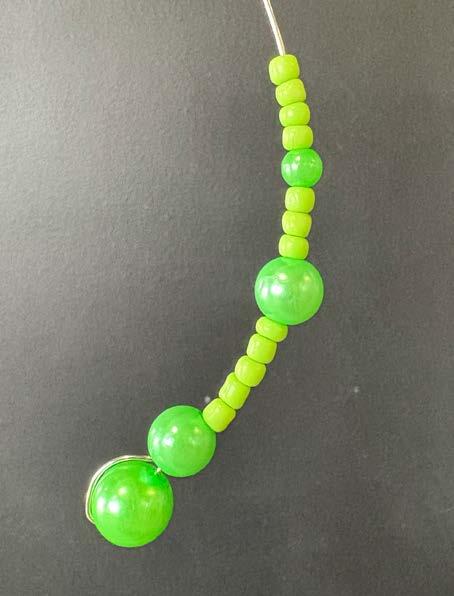
If you’ve struggled to keep plants alive, you’re not alone. With this beginner-friendly project, you can bring nature indoors in a way that’s low-maintenance, enjoyable, and nearly foolproof.
Tea is the most popular beverage in the world — after water — and for good reason. It’s warm, comforting and packed with powerful perks for your body and mind. So what exactly makes tea such a smart sip?
Tea is rich in antioxidants and anti-inflammatory compounds, which work together to support healthy blood vessels and a strong heart. A daily cup (or three) can quietly do your cardiovascular system some big favors.
Worried that a splash of milk ruins the benefits? Don’t be. While dairy can slightly reduce some of tea’s helpful compounds, most antioxidants still make it into your mug. Plus, milk adds a bonus dose of calcium and protein.
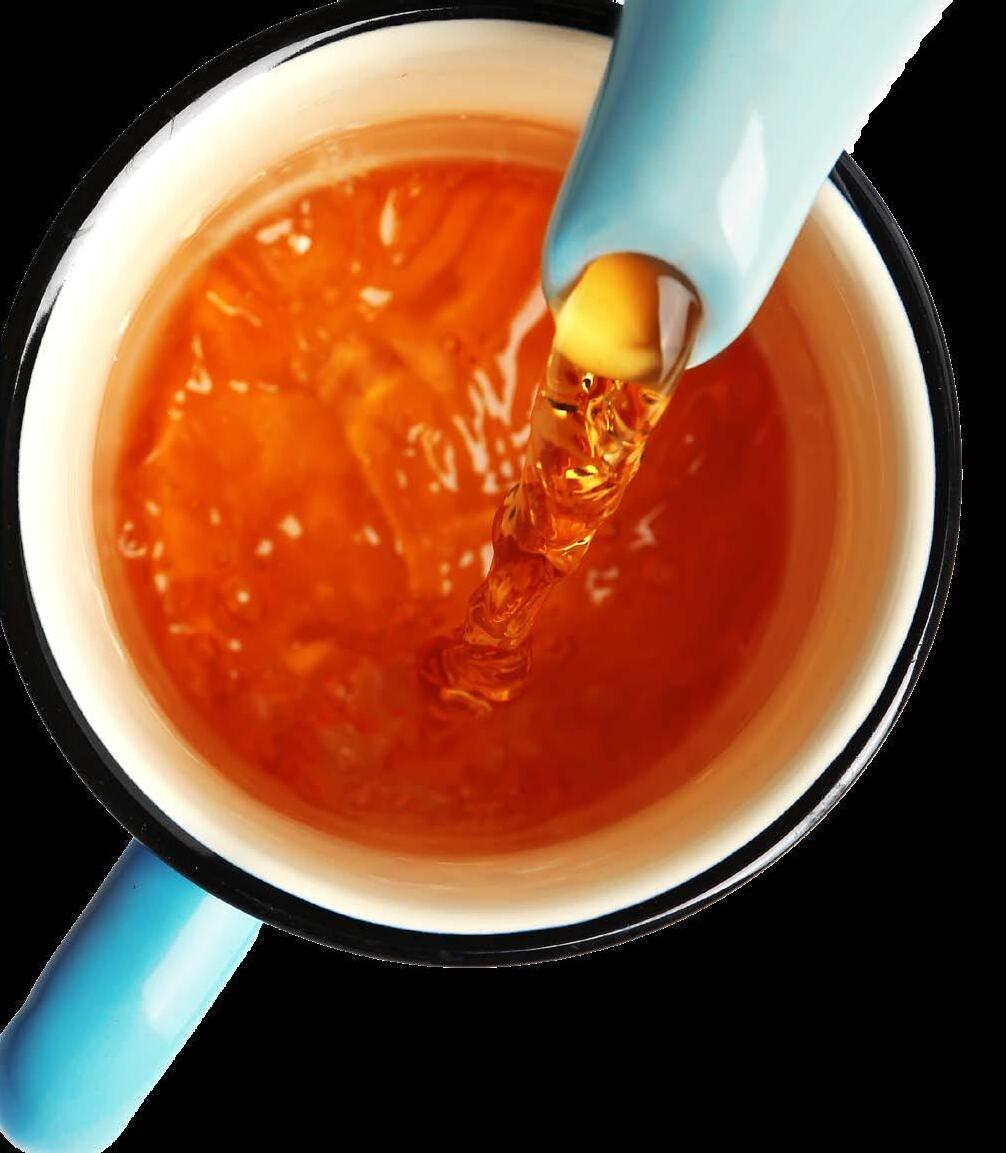
Walk down the tea aisle at the grocery store, and you’ll quickly notice exactly how many varieties of tea there are. Here, we’re just highlighting the benefits of classic black tea, but different teas bring different caffeine levels, health benefits and, of course, flavors. It’s a fun world to get acquainted with. Grocery stores and online shops are a great way to get started, but an even better way is to find a local store (and the Black Hills have a few great ones!) and connect with an expert.
Despite the myths, tea does count toward your daily hydration. With about half the caffeine of coffee, black tea offers a gentler boost — and less diuretic effects.
Speaking of caffeine, tea provides just enough to wake you up without the crash. It’s a steady, sustained kind of energy — ideal for morning meetings or an afternoon reset.
Science may not have all the answers here, but tea has long been linked to mindfulness and calm. Brewing a cup, pausing to sip and taking a breath — those rituals matter. And in our busy world, that’s no small thing.




The American Academy of Pediatrics (AAP) has a clear stance. Children under 12 should avoid caffeine altogether. Adolescents ages 12–18 should have no more than 100 milligrams per day — roughly the amount in one 8-ounce cup of coffee or two cans of soda. Pediatricians take this cautious approach because kids and teens are still developing physically and mentally. Their bodies process caffeine differently than adults, and even small amounts can have outsized effects.
For adults, caffeine can do a fabulous job in waking us up or giving us an afternoon boost. In moderation, that’s fine. For kids, however, caffeine can disrupt sleep, raise heart rate and blood pressure, increase anxiety or jitteriness, and
in some cases affect bone health by interfering with calcium absorption during growth spurts. Energy drinks are a particular concern because many have far more than 100 mg of caffeine per serving, along with added sugar and other stimulants. The AAP advises that energy drinks are not appropriate for kids or teens at all.
Parents often think of coffee first, but caffeine shows up in unexpected places. Chocolate milk has a few milligrams per cup. Certain flavored waters and sparkling beverages add caffeine for a “boost.” Coffee and chocolate-flavored ice cream or yogurt can also contain caffeine, and some over-the-counter medications include it as well. Reading labels is key. In the U.S., manufacturers must list caffeine content if they add it, but naturally occurring caffeine — like that in chocolate — isn’t always clearly labeled.
At home, modeling moderation is a good first step. If parents enjoy caffeine, show kids what a reasonable amount looks like. Keep energy drinks out of the shopping cart and stock the fridge with water, milk and caffeine-free teas instead. Encourage kids to check labels, just as they would for sugar or sodium. If a teen wants the “coffee shop moment” with friends, suggest decaf, a herbal tea or a smoothie. Above all, prioritize sleep by keeping regular bedtimes and limiting screen time before bed.
Kids with certain health conditions, such as heart rhythm problems, migraines or anxiety disorders, may be more sensitive to caffeine’s effects. For athletes, hydration and nutrition are far better performance boosters than caffeine. Sports drinks without caffeine may be useful during intense activity, but plain water is usually the best choice.


Caffeine is everywhere — in sodas, energy drinks, coffee, tea, chocolate, even certain snack bars and flavored waters. For adults, that morning cup of coffee is a treasured — and sometimes necessary — ritual. But when it comes to our kids, caffeine can raise some questions.
Here in the Black Hills, we see teens with jam-packed schedules — early school mornings, sports practice, parttime jobs, homework and social time. It’s no wonder many reach for caffeine to keep going. Unfortunately, this can create a cycle of less sleep, more caffeine and even less sleep. A teen who stays up late studying, then grabs a large iced coffee on the way to school, may feel alert for a few hours but crash hard later, only to repeat the pattern. Over time, this can lead to chronic sleep deprivation, mood swings and lower academic performance.
Some families of kids with ADHD are told caffeine might help with focus. Since caffeine is a stimulant, the idea makes sense at first glance — stimulant medications are a common ADHD treatment. In some cases, a small dose may temporarily calm or sharpen focus for a child with ADHD. But caffeine is not an official or recommended therapy for the condition. Its effects are unpredictable, wear off quickly and can cause sleep problems, anxiety or upset stomach. If parents are considering caffeine as a focus aid for a child with ADHD, it’s important to talk with a pediatrician first.
Check out additional insights from a Monument Health Pediatrics expert — scan to read more!

Caffeine isn’t inherently “bad,” but for kids and teens, less (and most likely none) is better. By following the AAP’s guidelines and keeping a close eye on where caffeine hides, parents can help children develop healthier habits that last a lifetime. In the end, caffeine should be a choice made thoughtfully, not a crutch to get through the day. For most kids, the real magic booster is simple: a good night’s sleep, a balanced diet and time to rest and recharge.
Caffeine Content of Common Drinks
(Approximate values — actual amounts vary by brand)
• 8 oz brewed coffee: 95–100 mg
• 12 oz cola: 30–40 mg
• 8 oz black tea: 40–50 mg
• 8 oz green tea: 25–30 mg
• 12 oz energy drink: 70–200+ mg
• 1 oz dark chocolate: 12–30 mg


Dr. Alexia Gillen has been a physician in practice and in leadership roles in Rapid City and Black Hills clinics and health systems since 2006. Prior to MOSAIC Medicine, she practiced both Family Medicine primary care and Urgent Care.

Log on to TikTok, Instagram or any other social media platform and it won’t take you long to discover the latest wellness trends. Catchy names like FiberMaxxing and SleepMaxxing draw our attention, but how can we tell which hacks are helpful and which take things too far? We went to an expert, Dr. Alexia Gillen, founder of MOSAIC Medicine in Rapid City, to help us sort through some of the biggest trends out on the web. Here’s some of our conversation:


Tell us a little bit about yourself, your training, your background and what you’re most passionate about.
My name is Alexia Gillen. I am a board-certified family physician and expert in functional medicine, which consists primarily of hormone, weight and gut health. I am most passionate about helping people find their optimal health, whatever that might mean for them.
Tell us about MOSAIC Medicine.
MOSAIC Medicine opened in September of 2024. So we’re at our one year anniversary, which is exciting! I opened it wanting to offer health care to people in a way that gave them time and space to be with their physician — and for me to be able to really get to know them and make sure that we’re treating them holistically.
If you go on TikTok and Instagram and other social media platforms, you can find a lot of different health trends. Are your patients practicing any of these trends or even just asking you about what they’re seeing online?
I’ve got patients who are coming in because they’ve found some of these trends and they’re using social media or influencers or podcasters to guide their health. I also have
people who haven’t listened or done any of that. So I really have the whole spectrum.
I would say that I’m not a fan of making health decisions based on what’s happening online, but I will say there are some of the influencers who aren’t bad or wrong. So there is some good information out there.
What’s the best way to know if online health advice is helpful or something to be leery of?
What we’re talking about really are extremes. People — especially in modern society — are all or none; people are either going to do this 100-percent, or they’re not going to do it at all. And I tell my patients all the time that the magic is in the gray zone.
Let’s dig into some of these specific trends that are out there. What are your thoughts on FiberMaxxing, the trend where people intentionally eat a very high amount of dietary fiber — often far above the standard daily recommendations.
On average, here in the United States, a person probably consumes 10 or less grams of dietary fiber per day, but women should be consuming about 25 grams daily and men around 30 to 35 grams of fiber per day. So I

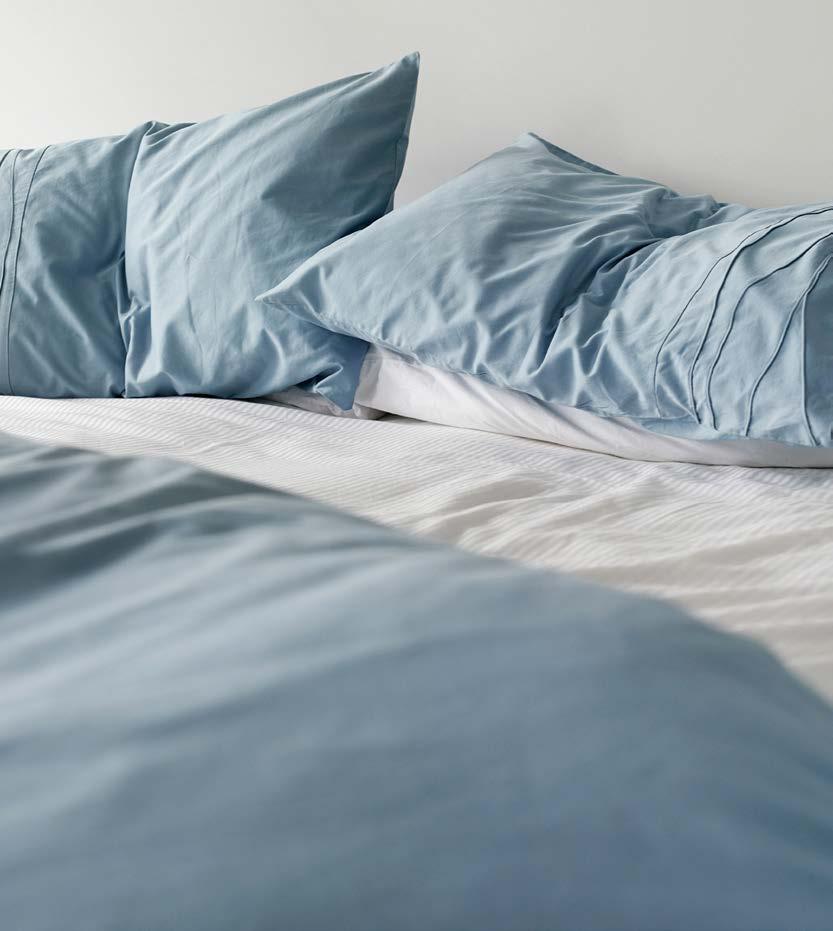

don’t think the FiberMaxxing concept is wrong, it’s just extreme.
I would also tell people when you’re looking for fiber, there are good fiber supplements out there, but certainly trying to get it from your diet is the best way to go. Also, don’t just jump in from eating like five grams of fiber per day to like 40, because it can cause the opposite to happen — constipation, gas and bloating.
Can you tell us why gut health is so important?
We’re learning a lot about how important gut health is — both in functional medicine and traditional medicine. When we have a leaky gut or an unhealthy gut, we can develop a lot of different food allergies. We can develop things like chronic headaches or chronic joint inflammation. There’s also a lot to be said and studied about the gut-brain axis in terms of depression and anxiety.
Another trendy nutrition topic that you see a lot about online is the idea of maximizing your protein intake. What do you think about that one?
For most of my patients, when we do a nutrition audit — almost 100-percent of the time — we’ll see that somebody’s low in their protein and too high in their carbohydrates and unhealthy fats. That’s just the common American diet.
So on average, I am supportive of a higher protein diet. I don’t like how they’ll put added protein in things like pancake mix or in a really unhealthy sugar cereal. That’s stupid. It really should be that we’re focusing on eating whole, plant-based or animal-based proteins.
For the average person who is not a body builder, why is protein important?
Our body composition does start to change as we get older, so the average person should be focusing on walking into midlife with a strong muscle mass. That way, if you do fall when you’re 75, you can pick yourself back up off the floor. And from a weight-health perspective, if we eat our protein first during the meal, we’re also staying full and satiated longer so that we’re not back in the pantry looking for more food an hour or two after we eat.
Another growing trend is SleepMaxxing. With a flood of gadgets now tracking every stage of rest — and people even taping their mouths shut or taking supplements to improve sleep — what’s your take on these practices?
I’m just going to start with saying that sleep is so important, and I think people forget that. People might
choose to forego sleep so they can get up and go to the gym at four o’clock in the morning. That’s the opposite priority. We should be getting our sleep first and then figuring out when we’re going to exercise.
The problem arises when people have their seven or eight hours, but they don’t wake up feeling restored or rested, or they’re waking up a lot during the middle of the night. So this is where I do think some of the little gadgets can be helpful — not because they’re diagnosing anything, but because they can give you data on a potential baseline. But the thing with wearing some of those gadgets is that we don’t want to become so invested in what they’re telling us that it’s now adding a whole other source of worry to our lives.
What about taping your mouth shut while you sleep?
I do have patients who swear by their mouth tape, but there’s actually no data out there that supports using it. Right now, some medical sources are trending towards the idea that this might be a little bit dangerous. I don’t know if I feel that way — if you’re taping your mouth shut, you’re just obstructing your airways a little bit more. But, it’s certainly not a tool I would say go out and get.
What about using supplements to get the most out of sleep?
There’s a lot of really good supplements that can help with sleep. But, I always start by helping patients make sure that they’ve got good sleep hygiene. So, what that means is making sure that your bedroom is set up at a cooler temperature — around 65 degrees. You also want to make sure you’ve got a good bedtime routine in that you’re turning off any devices or TV at least 30 minutes before bed. And don’t have a TV in your bedroom.
After we get those baseline techniques into place, then I do think it can be restorative to utilize some of those supplements. Some of my favorites for sleep are magnesium glycinate. It’s not super sedative, but it does cross the blood-brain barrier so it can be helpful at night for relaxation. Ashwagandha doesn’t help necessarily with sleep, but can help be relaxing during the daytime with long-term use. Melatonin certainly is helpful, especially for people who work shift work when their melatonin production in their body is off. I also like lemon balm for sleep. Valerian root can also be helpful.
To learn more about MOSAIC Medicine or schedule a free discovery call, scan this code:

If you or your child were born with hip problems, you don’t need to face a lifetime of limitations. Monument Health Hip Preservation Institute, features the only surgical team in the region who specializes in performing the periacetabular osteotomy (PAO) hip preservation procedure, which alleviates pain, restores movement and preserves hips for a lifetime.

Eric Krohn, D.O.
Fellowship Trained Pediatric Orthopedic Surgeon


Kenneth Milligan, M.D.
Fellowship Trained Orthopedic Surgeon Total Joint and Hip Preservation Specialist

Preservation Institute